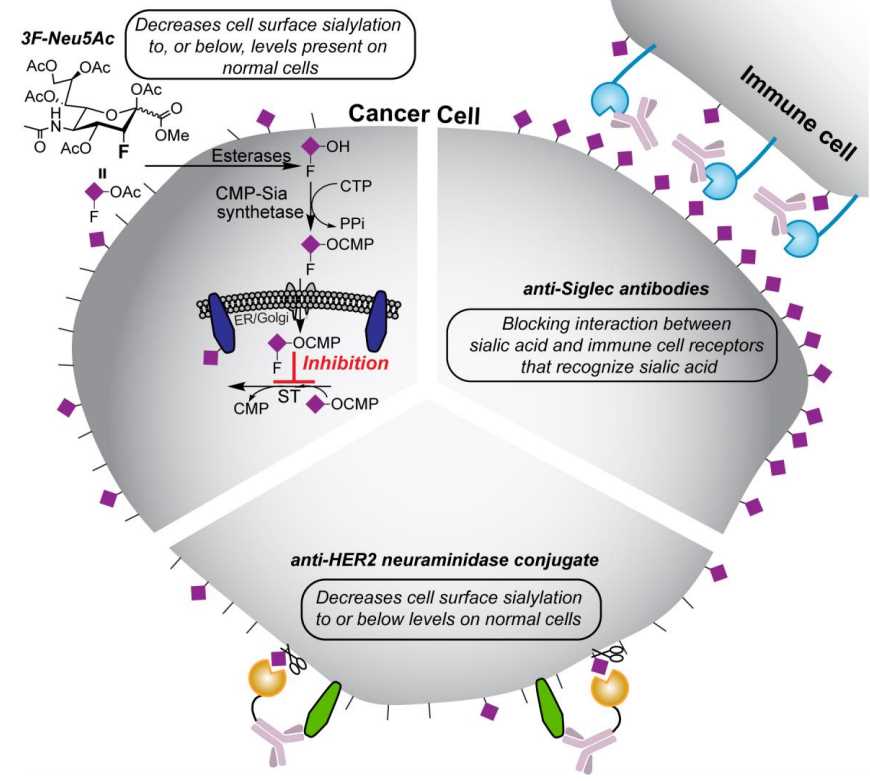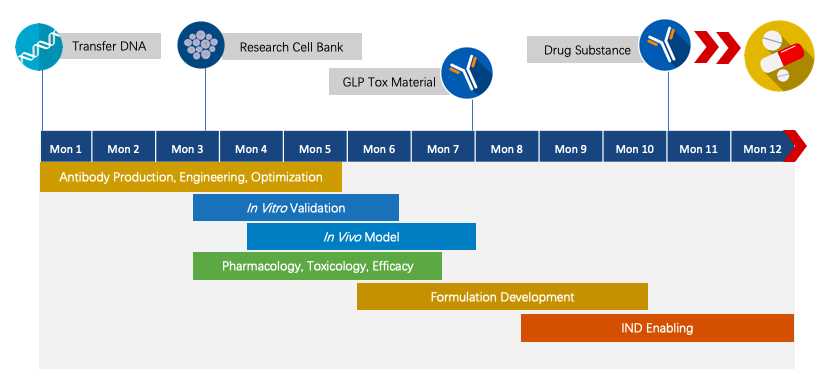In recent years, cancer immunotherapies have made impressive achievements in treating various cancers. With years of experience in the research on the therapeutic antibody, chimeric antigen receptor T cell therapy, etc., Creative Biolabs is now proposing a series of Next-IOTM programs targeting the tumor microenvironment to explore novel cancer immunotherapies. This program aims to develop different therapies targeting sialic acid.
Sialic Acid
Sialic acids are nine-carbon acidic monosaccharides and usually found in the terminal position of N-glycans, O-glycans, and glycosphingolipids. The sialylation pattern of cell surface glycoconjugates is found increasing with cancer progression, resulting in the expression of sialylated tumor-associated carbohydrate antigens (TACA). TACA is weakly expressed by normal cells. Sialylated glycans, specifically, are related to the invasive tumor with metastatic potential, In summary, we believe sialic acids can work as immunotherapeutic targets.
 Fig.1 Hyper-sialylation in cancer: causes and effects.1
Fig.1 Hyper-sialylation in cancer: causes and effects.1
Our Targeting Sialic Acid Program
Our program explores various strategies targeting sialic acids. We are dedicated to developing valuable pipelines with our partners together to, hopefully, step into the pre-IND stage soon.
-
Neu5Gc (interfere decreases cell surface sialylation)
-
Anti-Siglec antibodies (block interaction between sialic acid and immune cell receptors that recognize sialic acid)
-
Anti-HER2 neuraminidase conjugate (decreases cell surface sialylation)
 Fig.2 Therapeutic strategies for modulating sialic acid expression and interactions between sialic acid and sialic acid-binding receptors.1
Fig.2 Therapeutic strategies for modulating sialic acid expression and interactions between sialic acid and sialic acid-binding receptors.1
Published Data
Our program is developed using a basic principle that blocking sialic acid can boost anti-tumor immunity. Here are some published data about sialic acid blockade working on anti-NeuGcGM3 abs.
-
Using anti-NeuGcGM3 abs contributes to improved survival rate in patients with Non-small-cell lung carcinoma (NSCLC).
We have extensive experience in performing comprehensive program developments and effective problem-solving. For our Next-IO™ programs, we are committed to delivering the program to the pre-IND stage within about 1.5 years. Accurate timeline will be determined on a case-by-case basis. Here is a draft timeline for your glance.
 Fig.2 The timeline of Next-IOᵀᴹ programs.
Fig.2 The timeline of Next-IOᵀᴹ programs.
Creative Biolabs is seeking partners to co-develop cancer immunotherapies targeting sialic acid. We are dedicated to providing our customers 24/7 high-standard customized service. Our goal is promoting the program to the pre-IND stage as soon as possible. If you are interested in our program, please feel free to contact us for more details.



 Fig.1 Hyper-sialylation in cancer: causes and effects.1
Fig.1 Hyper-sialylation in cancer: causes and effects.1
 Fig.2 Therapeutic strategies for modulating sialic acid expression and interactions between sialic acid and sialic acid-binding receptors.1
Fig.2 Therapeutic strategies for modulating sialic acid expression and interactions between sialic acid and sialic acid-binding receptors.1

 Fig.2 The timeline of Next-IOᵀᴹ programs.
Fig.2 The timeline of Next-IOᵀᴹ programs.

 Download our brochure
Download our brochure

